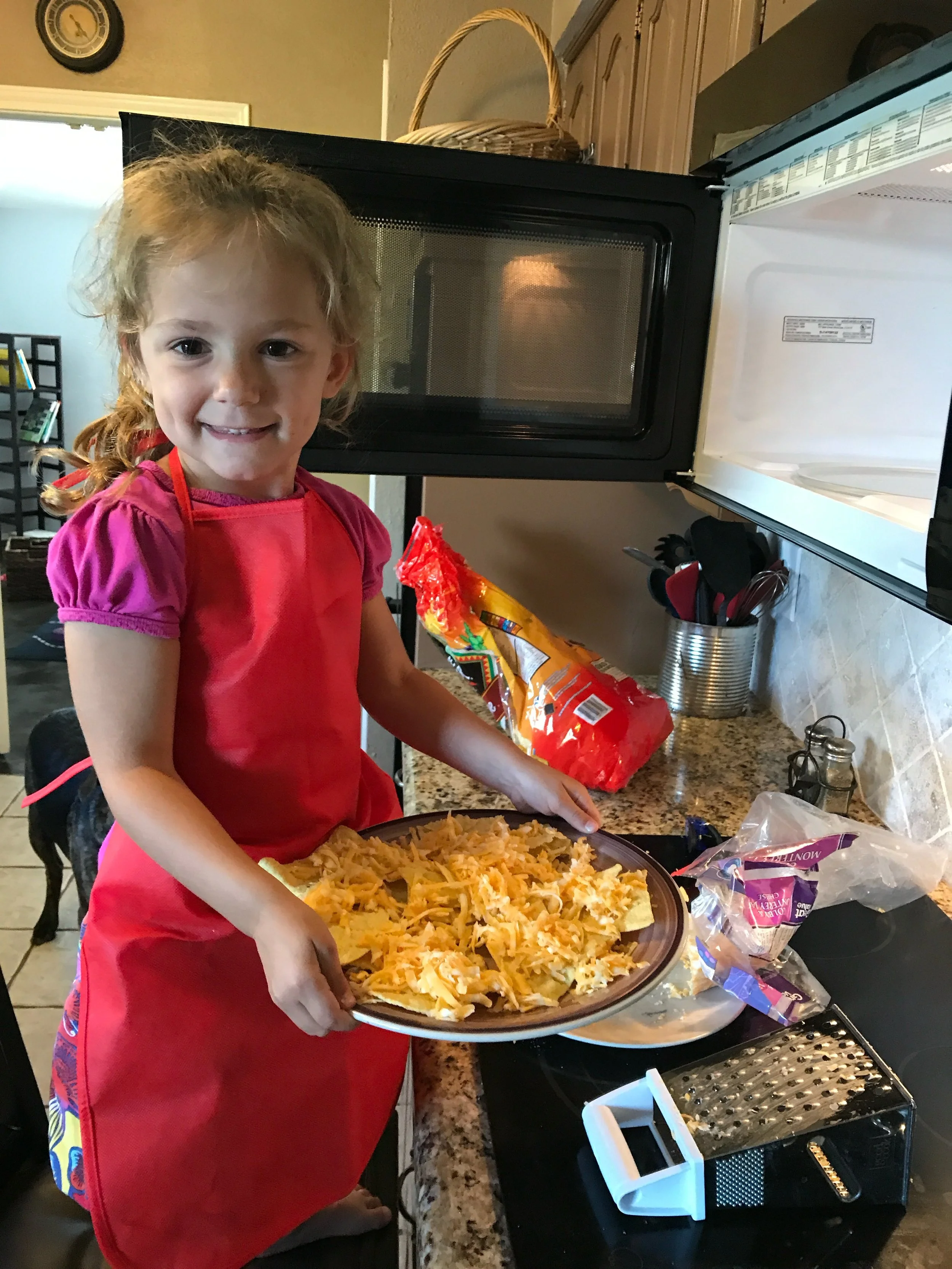Teach Life Skills Before the Teen Years
Thirdborn making her own nachos, Lewisville, TX 2017
Because little kids want big jobs—and big kids often want to do nothing.
The Big Idea
There is a window when children are thrilled to “do it myself.” If we catch that window, responsibility feels like a privilege. If we miss it, the teenage years can turn into a tug-of-war where initiative drops, stakes rise, and both sides feel worn out. Start early, build skill by skill, and you’ll glide into adolescence with capable kids who already carry their weight at home.
Why starting young works
1) Motivation is on your side. Toddlers and early elementary kids love to imitate and help. They beam when trusted.
2) Identity forms early. “In our family, we all pitch in” lands better at six than at sixteen.
3) Habits beat reminders. A chore that is ritualized at age seven requires less debate at age thirteen.
4) Safety and skill grow together. When you scaffold early, kids learn caution alongside competence.
The motivation dip (and how to beat it)
Little kids: “Give me a big job.”
Big kids: “Why should I?”
Close the gap by giving real jobs early with clear finish lines and visible wins. By the time the “why should I?” era arrives, the answer is simple: “Because you already know how—and you matter here.”
How to teach any life skill (the 3-step hand-off)
Show: You do it. Narrate each step.
Share: Do it together. Let them handle one part.
Shift: They do it. You spot-check and celebrate.
Make it stick with:
A name for the job (“Table Captain,” “Laundry Lead”).
A finish line (“Three real pieces → done,” “Counter wiped until it shines”).
A rhythm (same cue, same time of day).
A tool sized for them (step stool, kid knife, mini watering can).
What to teach when (samples from Week of 12)
Ages 1-2: “I can help.”
Choose between two snacks
“Put in” toys, transfer items between rooms
Water plants with a small can
Buckle the car-seat chest clip with your setup
Sign/say “please,” then “thank you”
Ages 3-4: “I can do a part.”
Load/unload simple groceries
Stir, chop with kid-safe knife, pour
Clear place and wipe table
Follow a visual checklist for mornings
Learn phone number and address
Ages 5-7: “I can own a process.”
Make a sandwich, reheat leftovers, basic microwave rules
Laundry start-to-finish with lint check
Pack their lunch, add items to the grocery list
Cross the street with supervision, know family emergency spots
Use timers they set themselves
Ages 11–12: “I can run the home for a week.”
Plan and cook full dinners, bake from a recipe, brown meat safely
Vacuum, mop, clean bathroom and fridge
Shop with a list, ask clerks for help, pay confidently
Basic first aid, household budget awareness, digital boundaries
Lead simple safety drills, inventory your emergency kit
(Customize to your child’s maturity and your home.)
Common roadblocks (and what to say)
“It’s faster if I do it.”
It is—today. But you’re training tomorrow’s speed. “I’m trading time now so future me can breathe.”
“They make a mess.”
Choose jobs with easy clean-up. Teach the reset as part of the job: “We wipe the counter after we chop.”
“They lose interest.”
Cap the job with a finish line and a title. “Three towels folded. Laundry Lead is off duty.”
“My kid resists.”
Back up a step. Pick one real job with a clear benefit (money, screen time after finish, or a privilege they care about). Pair it with a short training window and a written standard.
Micro-scripts that reduce pushback
“I trust you with a real job today.”
“Your finish line is three. Then done.”
“First we do the job, then we choose the show.”
“Check your list, then check with me.”
“That wasn’t wrong, it just isn’t finished yet. What’s the last step?”
Watch-outs
Safety first. Match jobs to maturity. Supervise heat, blades, chemicals, streets, and strangers.
Attention is currency. Reward the finished job with connection, not the misbehavior.
Consistency beats intensity. Daily small reps beat an occasional chore marathon.
Real-life wins you’ll notice
Kids ask “What’s my job?” instead of “Do I have to?”
Mornings run smoother because clothes and checklists live where kids can reach them.
You stop being the household’s only project manager.
Teens feel respected because they are already competent.
Ready to go deeper?
I built the Week of 12 so parents can hand off real responsibility one skill at a time—so by about age twelve, kids can run the home for a week. The program can be downloaded here.
Pro Tip
Keep a whiteboard on the fridge titled “Jobs I Can Do Now.” Kids love seeing their capability grow.
Watch Out
If a job becomes an argument, shorten it. Keep the finish line visible and attainable.
You Can Skip This If
You already have a working system and your child is consistently owning age-appropriate jobs. Add only what serves your family.

